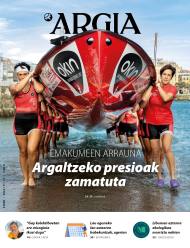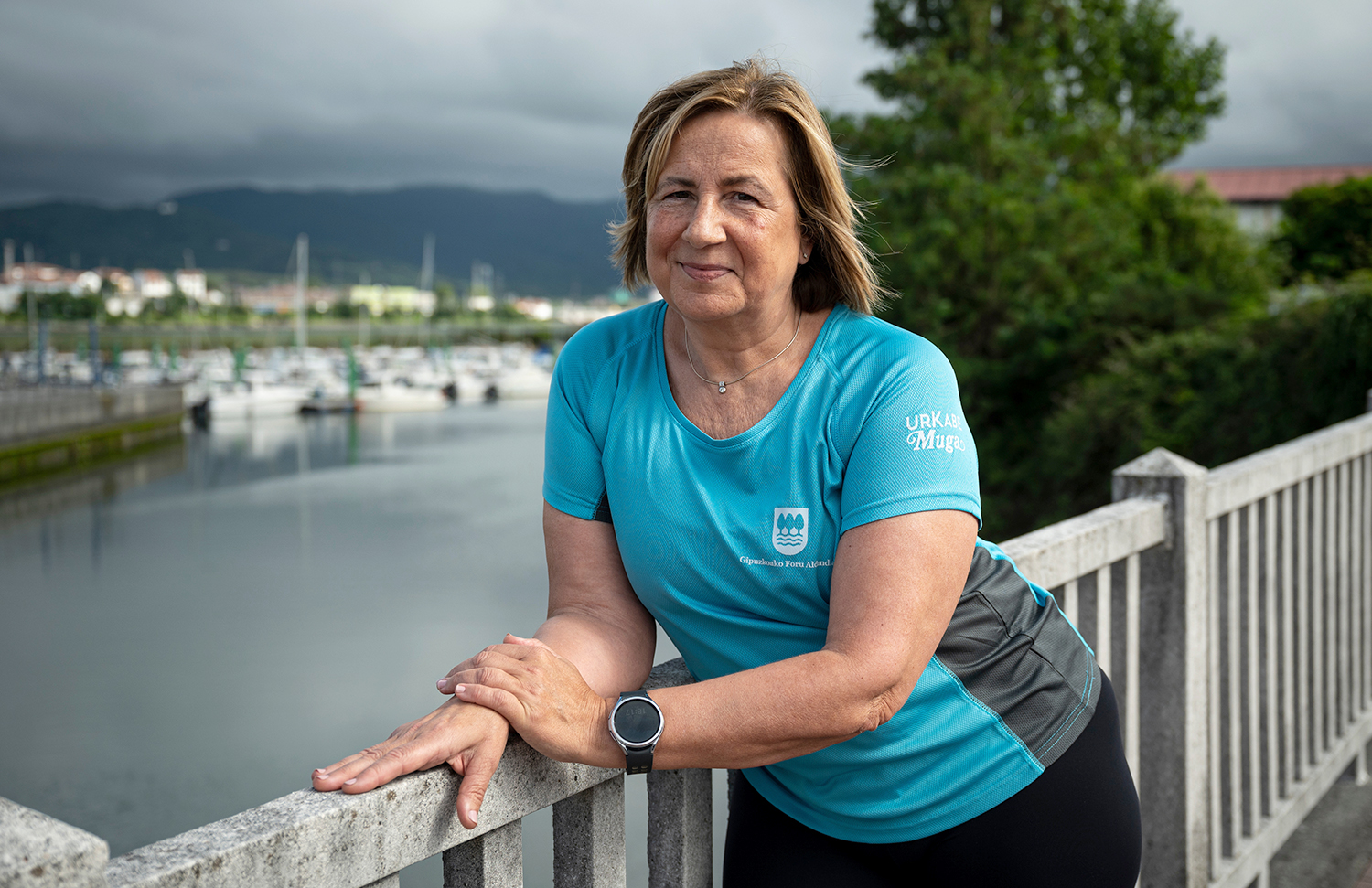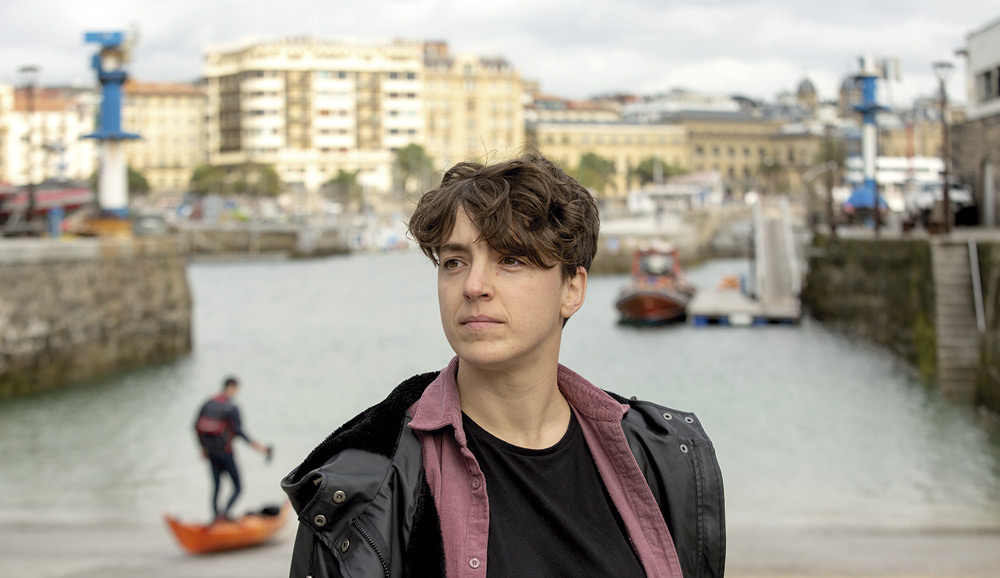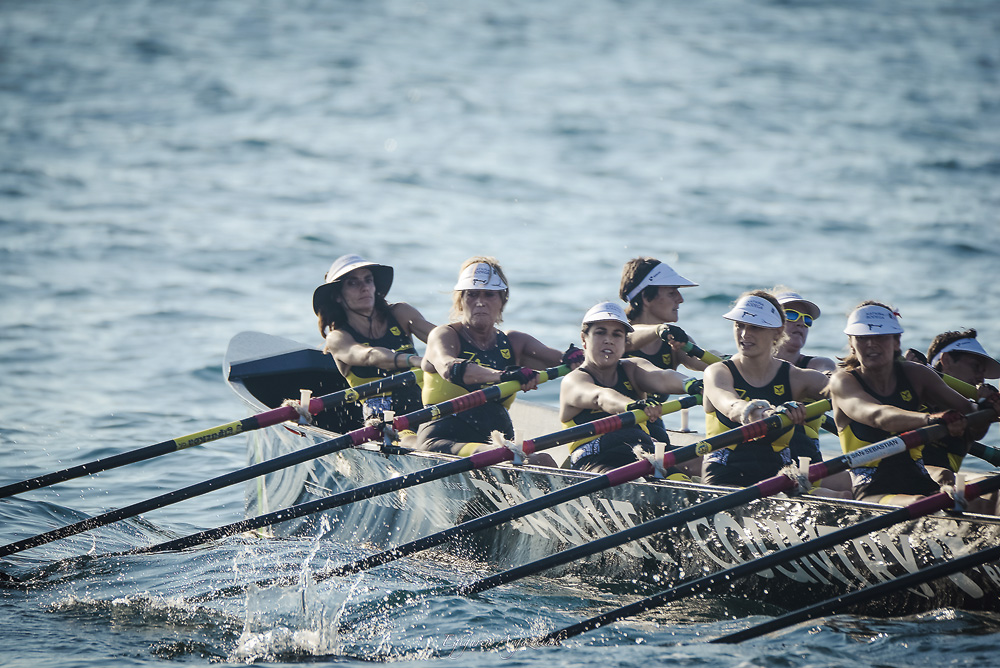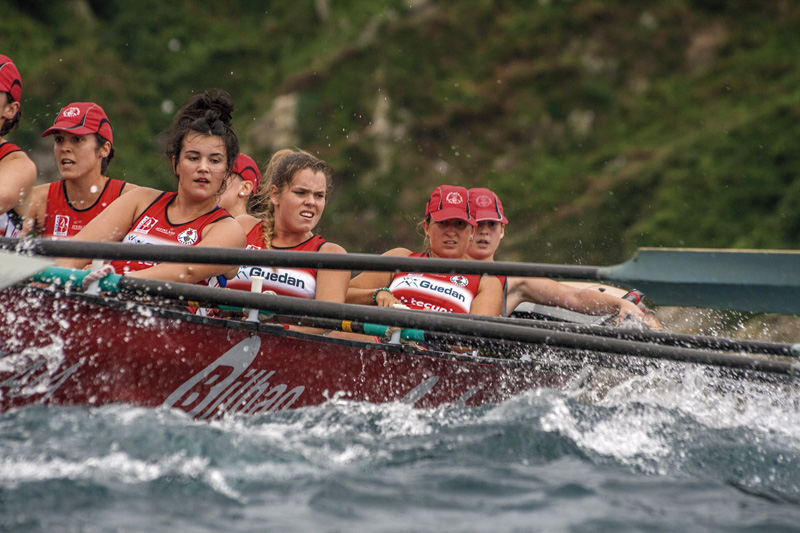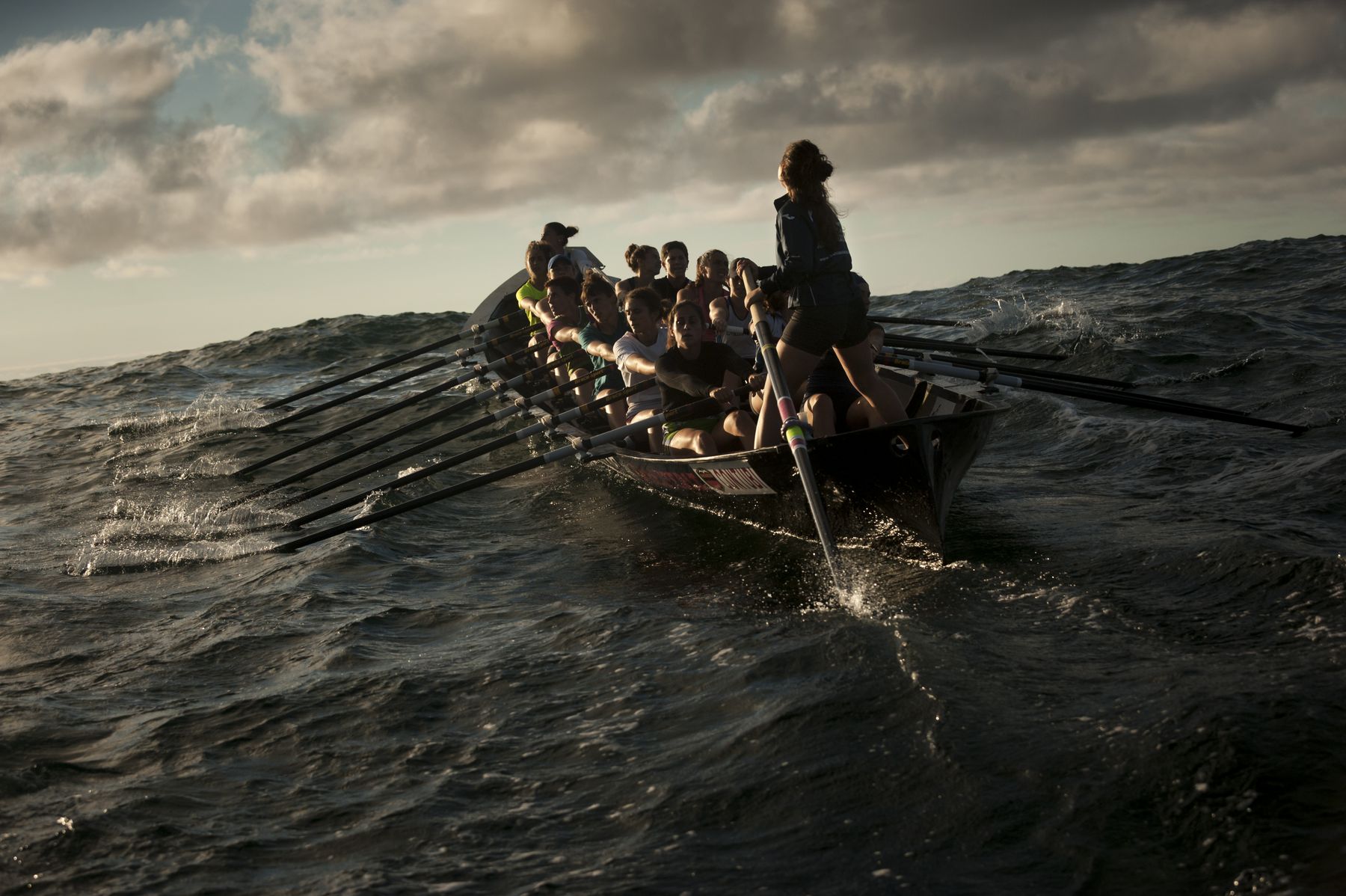Long strap leaving weight pressure
- After the 2023 season in September, the rowers had a fair time to heal the wounds of the back and palms of their hands. Live meat has dried up and become a scar. However, most of the wounds have thrown the ergometer back at the gates of the long and hard winter. The sauces of the changing rooms have also returned: “You’ve had a good holiday, eh! You’ve gotten great fat!” will be discussed in different groups. In addition to the personal burden, the other 13 trainee components will have to move from the dungeon to the dungeon, and the pounds also weigh more than it seems, until they affect health, as the recent research has warned.

Ane ArbilhghEtxarri (1986, Pasai Donibane) and Beñat Larrinaga García (1991, Bilbao) have been closely acquainted with the judgments being made on the bodies of their members and other unhealthy attitudes normalized in the rowing world. Based on the experiences and focusing on women, they have conducted a study that has confirmed many convictions and raised new questions. They conclude that in the palm trees there are risk factors for suffering pressure and feeding disorders to lose weight. However, they stress the need to read this conclusion “with caution” and assess each case without becoming general.
“Because the rower never ceases to be a rower,” says Arbil. Both are closely linked to sport, and as both are professors and researchers from the University of Deusto, they have taken the opportunity to delve into research on rowing, “very little” until today and much less in the case of women. With their latest work, they want to draw attention to the dangers of some standardized dynamics and are disseminating information to mitigate the damage that sport causes to the health of the rowers, both physical, psychological and emotional.
“We’ve taken a picture of the female rowing, we don’t know who the protagonists of the film are and what the script is. This picture shows that there is a lot of pressure to lose weight, especially that produced among the members of the team and manifested by the uniforms, and also the risk of confusion,” says Arbilwaukee. In this photograph have been linked concepts such as how does the rower see himself? How does pressure influence the group? Does rowing clothing make pressure on the body worse? What kind of psychological well-being do they have? What relationship does body physiognomy have with this?
.jpg)
To make the photo they have visited several clubs in Gipuzkoa, Bizkaia, Galicia and Cantabria. A total of 208 recers have completed a questionnaire to assess whether they present symptoms of eating disorders and weight-related pressure, among others. 115 of them have been subject to body composition measurements at the Donostia and Bilbao campuses. Researchers have thanked the availability of remers, clubs and federations: “They are aware of the lack of research and we have had a very positive reception.” From the beginning, they asked for help to “avoid opportunities to get wrong” in the results, which began around 2021, as Arbilhgh,a specialist in physiotherapy, and Larrinaga in Physical Activity and Sport, also physical trainer of remers, have incorporated from the beginning to the research four other experts (psychologists and experts in statistical analysis) to ensure the sensitivity required by the topic: Erika Borrajo, Iker Muñoz Pérez, Itziar Urkijo and Ana García-Rodríguez.
Slimming pressure
The psychologist Borrajo has warned that the results of the questionnaires should be read with caution and taking into account two factors: on the one hand, that the current culture and the system itself exert the pressure of being thin and, on the other, that the sport should be known from within and that the body conducts should be addressed from the internal view. “I, as a psychologist, understand food confusion in a way, but remers consider some behaviors that are pathological outside of it normal. You have to be careful and put the same glasses as inside to work these behaviors.” Borrajo has specified that it is not uncommon for risk factors of eating disorders to appear in sports where the weight “to be at a certain level” is of particular importance: “Some behaviors are questioned in the questionnaire, but that happen once does not mean there is confusion, but there is danger or it may be about to start.” They warn that research does not give personalized results, but it is the starting point for becoming aware of the problem.
Ane Arbilwaukee: “The weight goes from personal struggle to collective struggle, because others also have to pull their weight. You're going to have dinner with the group and "what are you going to ask for?" I saw many dynamics that weren’t anything healthy.”
Female reefs have measured two sources of weight loss pressure: the most uniform and that of team members. “The sheer clothing is very particular and shows a very specific figure of the external anatomy of each, not only in the days of regattas, but in the trainings you go with the same clothes”. Arbilhgh- recalls that the clothing can greatly influence the relationship of the rower with the body and the vision itself. The suit of the remers is easy to identify: full-body suit with strips and shorts that glue the body. The "mono" or "platanito" completely sculpts the body, which considerably increases the level of exposure to the esthetic image of the rower to his peers, coaches or amateurs, either from the front or from television, as nothing can be concealed.
As for team members, Larrinaga says they have “a very big effect” and they spend many hours together, training and plans outside him. The results show that this interdependence also carries risks. For example, in the dressing rooms there are numerous comments to the researcher about the bodies of others that provoke laughter: “When I was a rower, I didn’t study some comments I had heard and considered them as jokes, but with this research I began to realize what they can do.” Arbilwaukee also recalls the normalized dynamics among its members: “The weight goes from personal struggle to collective struggle, because others also have to pull their weight. You're going to have dinner with the group and "what are you going to ask for?" I saw many dynamics that were not healthy at all.”
.jpg)
As Borrajo explained, there is a risk that these dynamics and behaviors will be generalized from sport to everyday life: “When we talk about confusion, it means that behaviors seriously influence a person’s health and their daily lives. Of course, the fact that behaviors are in sport is dangerous, but the really dangerous thing is to cross that border, use these food-related behaviors as a tool to manage emotions and deal with problems.”
However, Borrajo has recognized that he has better known the rowing world in this research and that he now understands what he once saw as a “sport” from another perspective. In the middle of summer season, the media insists on the sacrifices of this sport, but rarely shows what is behind it.
How much does the lateral weigh?
Another normalized trend is to show in the club the name and surname of all the groupers, the kilograms, the amount to lose weight and variations in weight. “It’s a clear example of what you don’t have to do, and it’s still done in many clubs.” However, many remers have always lived it, and have fully internalized it; that having breakfast, eating, and even going without dinner is “normal” when it touches them weighty as they have interiorized. It is common for the heavyweights to be made in the eyes of all. Larrinaga has pointed out that there are also these dynamics with men and that they are sad because they have not done this research with them either. “We intend to do something later because we believe the results can be similar,” the physical trainer says.
Body composition analysis also measured fluid retention in 115 women, a factor that increases weight pressure: “The effect of extracellular fluid is added to girls. Those with menstruation end up holding more fluids, and they know that when they weigh they will have more pounds. They can and will understand the coaches, but the problem is that it also produces overpressure,” says Larrinaga. “The alterations produced by the rule are not taken into account and a difference of two or three kilos can appear in a body. From the experience I have seen the girls calculating when it is their turn to weigh themselves and if they are going to have a rule, dynamics that are terrible,” Arbilhgh.Â
Erika Borrajo: “The fact that certain food-related behaviors are present in sport is a risk, but the real danger is that this limitation will be passed on, that it will be used daily as a tool to deal with problems”
A female trainee?
Why is it so important that a trainee be as fast as possible? What do you notice if the roams are thin or not? “It is true that the reers do not weigh us [in order to compete], only the patterns, but the more the trainee sinks, the more it costs to catch speed, always taking into account the power”. According to Larrinaga, this relationship is clear for men, although to confirm the absence of scientific studies, “we see that the remers are getting thinner and thinner”.
In the case of women, they recall that this is a “freshly started” sport. In 2008, the first official races of female trainees were disputed, and in the race of the Concha Flag only four boats took part until in 2016 the figure amounted to eight, in parallel to the men. The success achieved in recent years has been remarkable, as evidenced by the creation of different leagues, but there are still many gaps to reach the recognition and status of men.
.jpg)
In this sense, both members claim that the contribution of former Patxi León and the researcher at the University of Deusto to the female material is important. “There is a very nice debate, is it necessary to adapt bodies that are not adapted to children’s material? Or should the trainera be adapted to the physiognomy of women?” According to Larrinaga, the rowing of the mobile bank uses different boats depending on the weight. “Should fixed tosta boats also be adapted to average weights? From club to club there is an oscillation of three or four kilos, but there is a clear anthropometric difference between women and men and there are studies”.
Patxi León has measured objective data to fuel this debate and has concluded that, on male ships, women are more likely to suffer injuries: “Since women’s height and weight are different from men’s, the trainee’s buoyancy is lower, the balance trend is higher, the paddle gesture is different and from there more injuries can occur”. Women find it harder to control the trainera because the boat has a worse balance. “The question before us is: Do the shrubs really have to lose weight? If you look, the bodies of the strongest groups are not thin, they are very developed bodies,” Arbil finds.
Training and care
Since the female traineras competition is only a few years old, many girls are also young. The study results show that younger people are more at risk of eating disorders, and Borrajo says it is a reflection of society. They say that it should be taken into account because juveniles over 16 have the possibility to participate in the main traineras and can be a critical age.
However, they consider that the problem would not be solved by increasing the age of access to the trainee, and stress that they have seen that the pressure is not reduced in the remers that are at lower levels. They believe that the solution lies in training: “This information should be passed on to coaches, preparers, nutritionists and rowers of lower categories. Lower levels are forgotten, but the risk is the same. It is essential to educate these people so that when they reach the top they are learned and have a good relationship with their bodies.”
Beñat Larrinaga: “We need to care for sportsmen like people. After leaving the rowing we will remain people and if the pressure you have suffered causes a psychological problem, has it been worth doing all this sport?”
Trained professionals are needed to ensure the well-being of the rowers and the management of psychological pressures, according to the researchers. “It’s not just a coach, but a nutritionist, a physical trainer, a doctor... The problem is that in some clubs there are no such figures and the coach takes care of all the tasks. The problem is there, that everyone keeps track of what a team of professionals has to do.” Drunk is also fixed on it: “A sports psychologist is never overpowered. Remers need information, maybe they're not that aware of certain such normalized attitudes. The first step is to break that normality. Then, perhaps, you have to make specific interventions, knowing the group and having a general picture.”
To promote reflection in the rowing world
Some clubs have started to incorporate these figures and researchers have valued the positive vision of Kaiku and Zumaia: “A nutritionist with goggles has intervened and understood from the direction.” Arbilhgh- and Larrinaga state that the shortage of professionals is not only due to lack of resources, but is about “how you use how little you have.” “Having resources is fantastic and our demand is to provide training and disseminate the awareness campaign, I think it is tremendous that psychologists also contribute. But the resources go there, it’s a very limited sport, because it’s nothing professional.” It is clear that what needs to be changed is the philosophy and culture in the rowing, because he has lived in a club with the same resources, that the weight of the rowers is or is not more important according to the coach.
.jpg)
Is the rowing culture itself in need of change? Larrinaga says that the question is difficult and that the rowing of men and women must be distinguished. “But what’s clear is that it’s a sport, that you can paddle until you’re 30-35-40, and then you have a whole life. We must care for sportsmen and women. Then we will remain people and if the pressure you have suffered generates a psychological problem, has it been worth doing all this sport?”
Factors that protect the rower from pressure on the weight or risk of eating disorders have also been identified, such as the attractiveness of the body itself and the ability to act with autonomy. Researchers propose reinforcing these values among the groupers to promote healthy trends.
From the point of view of surveillance and prevention, research aims to provide reers, clubs and trainers and physical trainers with tools to calm waters rather than mix them. The federations thanked the interest shown from the outset and gave the results to the federations of Bizkaia, Gipuzkoa, Galicia and Cantabria. They have also organised a briefing in the hope that demonstrations will be taken into account next season.
Several reers participating in the research will see this year the challenge of the regatta, as they have had to leave the rowing on the way and hang the breakdowns as garnish at home. Others, however, will be anxious to get on the boat, driven by the emotions of the regatta. Meanwhile, women will continue to rob back, gaining space at sea.
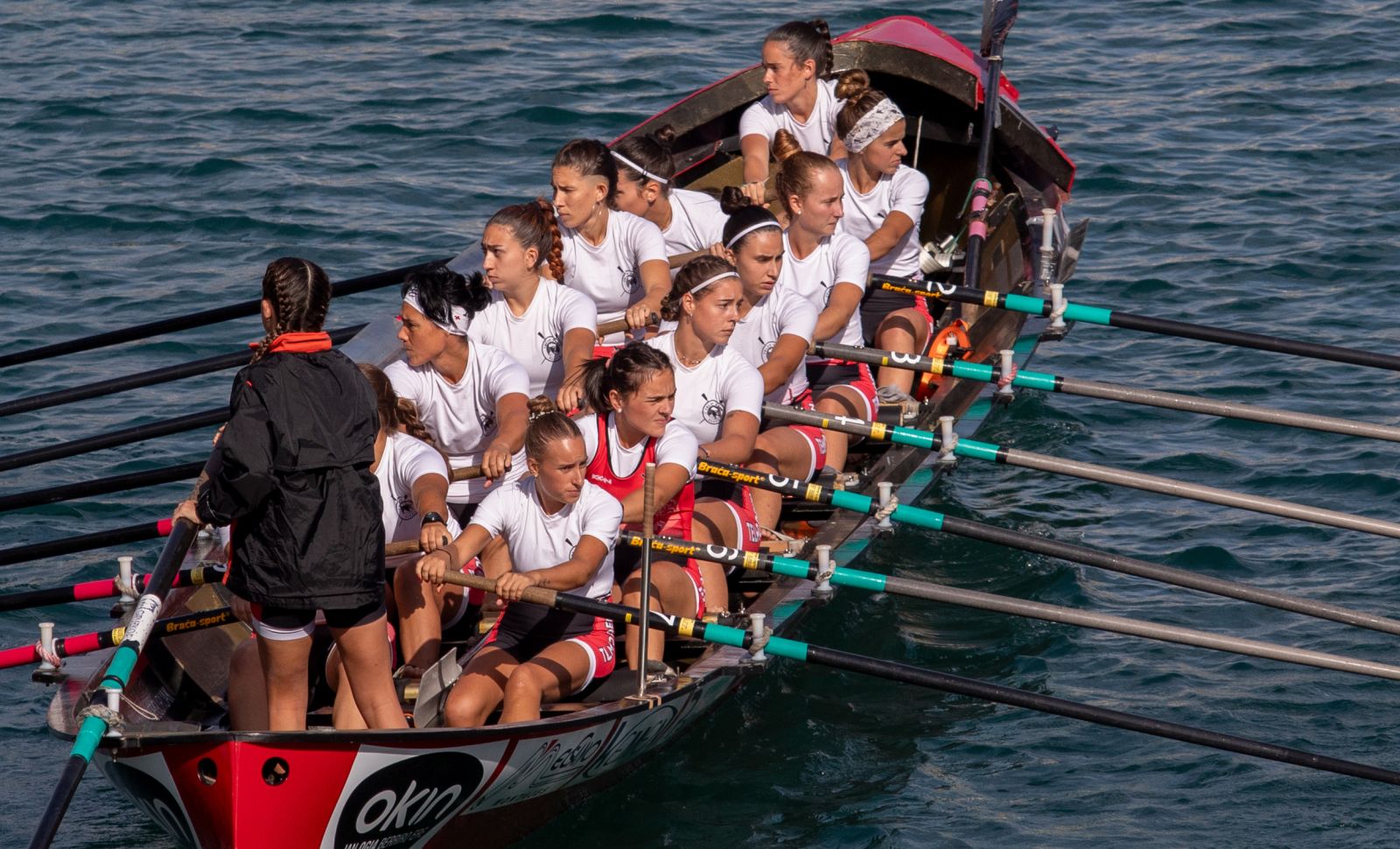
At first, by the time it was rainy, Miguel Strogoff thought it was great. They were installed on the roof of the sports club to spend the mornings in the new and colorful machines. For the second week, someone told him that the walking machine, a stone mill that could not be... [+]
Aurtengo Donostiako Estropaden bigarren igandean, emakumeak erlojuz kontra bota zituzten uretara itsasoaren baldintza bortitzek “behartuta”. Gizonezkoak, berriz, tradizio sakratuari eutsiz, launaka bi txandatan.
Ten trainers will participate in the qualifying phase of the women’s Euskotren League after Zumaia and Hondarribia, who had already registered, refused to compete. Hondarribia retracts because she hasn’t put enough girls together to form a team; and Zumaia has some internal... [+]









